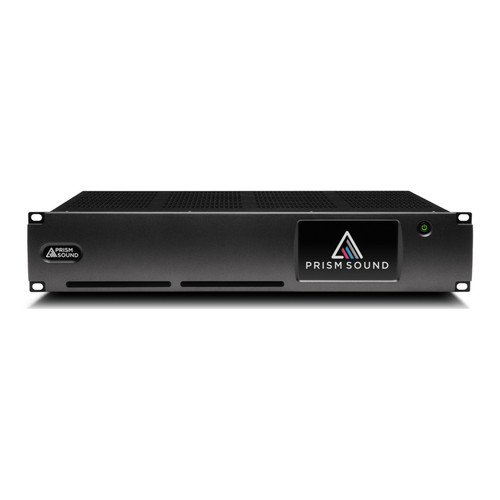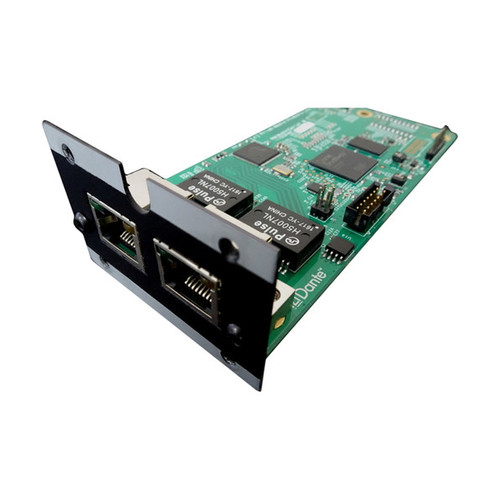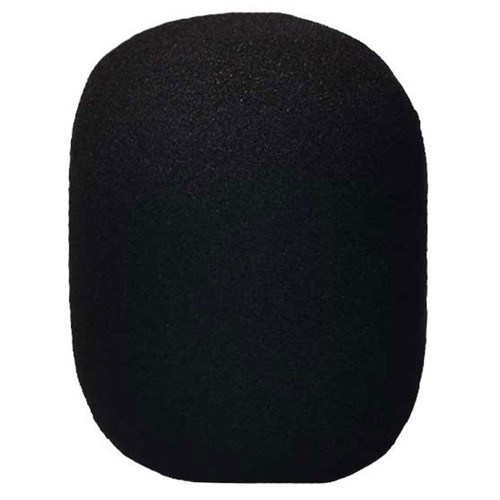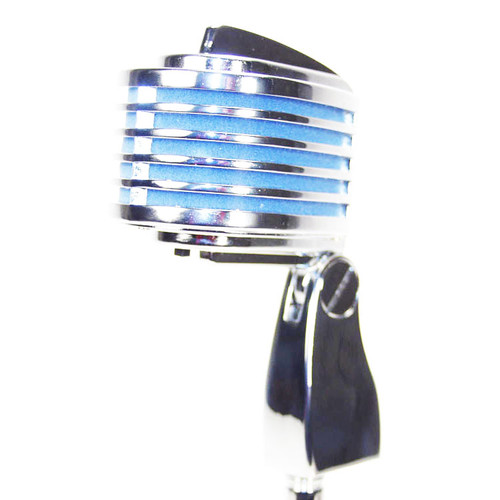You Will Receive
- Prism Sound Lyra 2
Lyra 2 Features
- 2 A/D Analogue input channels select from:
- 2 x Microphone XLR inputs with phantom power and 20dB pads
- 2 x High-impedance front panel instrument inputs
- 2 x Balanced line inputs on TRS jack
- 4 D/A Analogue Line Output channels
- Headphone output with independent mix and volume control
- S/PDIF Digital in and out on RCA/phono
- S/PDIF / ADAT Digital in and out on TOSLINK optical
- AES3 mode on RCA/Phono with supplied XLR adaptor
- Word-clock sync I/O on BNC connectors
- Sample rate conversion on digital inputs or outputs
- Ethernet port for future expansion
Overview
The Lyra family of USB audio interfaces offers Prism Sound performance at its most affordable ever. They are based on the Orpheus audio path and clock circuitry, but in a smaller package for those who don't need eight channels of analogue I/O. There are two models Lyra 1 and Lyra 2.
Lyra is based on an ARM Cortex processor design which offers class-compliant USB and the possibility for future Ethernet AVB interfacing, plus DSP and local mixing capacity beyond that of the present Orpheus platform.
Signal path
Analogue and digital input channels are available as inputs for your audio workstation software through the host computer's audio driver. Similarly, analogue and digital outputs and stereo headphone outputs can be played independently.
Verifile
Verifile is a radical new proprietary technology exclusive to Prism Sound which allows computer audio streams and recorded files to be quickly checked for a wide range of clicks, errors and dropouts, without any compromise in the audio content or any additional metadata.
No-compromise, full Prism Sound audio quality
Lyra makes no compromises on audio quality. It is the result of years of research and development into digital audio conversion and extensive dialogue with Prism Sound's customers.
The Lyra design brief was: Prism Sound quality at an even more accessible price point. Lyra has the same no-compromise analogue front and back ends as its brother Orpheus, with the same fully-balanced-throughout architecture and the same isolation barriers protecting the analogue from digital and computer interference.
Standards compliant USB interface
For Lyra, we have created a unit that is compatible with the widest range of computer hardware by using a USB2 interface. This is a UAC2 (USB Audio Class 2) interface supported natively in Mac, Linux and Android, and in Windows via a driver.
Flexible Inputs and Outputs
Our professional users wanted a highly integrated solution with stereo inputs serving as line, instrument or microphone inputs, and line outputs that could be used for stereo monitoring, mastering and/or foldback to performers. Lyra offers up to four monitoring outputs, digital inputs and outputs as stereo AES3 or S/PDIF or up to 8 channels of digital I/O on the ADAT optical format, plus stereo headphones.
Digital Mixer
Our customers also identified a need for a unit that could provide low latency foldback to performers, particularly when tracking and overdubbing. In answer to this need, Lyra has a built-in digital mixer that can be configured from the host computer to provide foldback feeds to performers, each with their own stereo mix of workstation playback and any of the inputs.
Sample Rate Conversion and Noise Shaping
The digital output is equipped with the four Prism Sound SNS noise-shaping curves and includes Prism Sound's renowned synchronous sample-rate conversion (Lyra 2), allowing outputs to various external devices at other sampling rates. The sample-rate converter can be used at the outputs as well as the inputs, so as well as dealing with unsynchronised or wrong-rate digital inputs, Lyra can also generate, say, a live 44.1kHz output from a 96kHz session. Since Lyra also includes the full suite of the famous Prism Sound 'SNS' noise shapers, you can also reduce to 16-bits for CD at mastering-house quality. Lyra 1 supports sample rate conversion on the input only.
Unsurpassed Jitter Rejection
In the 1990s Prism Sound pioneered testing of sampling and interface jitter and as a result our digital audio products deliver unsurpassed jitter rejection. Prism Sound digital audio products lock up fast and re-generate ultra-stable clock outputs. Another aspect of the traditional Prism Sound converter that is retained was the clocking - it's just as important as analogue-path considerations sound-wise. Lyra uses the same CleverClox dual digital phase-locked loop (DPLL) circuitry as Orpheus so whether it's providing a high-quality master clock for the rest of the room (Lyra 2 only), or dealing with a jittery clock from outside, Lyra is as rock-steady as its forbears.
Support
Over the years, Prism Sound's reputation for audio quality has been matched by its reputation for after-sales support and technical advice. Lyra has the benefit of that support and customers have access to one of the best technical teams in the business.













